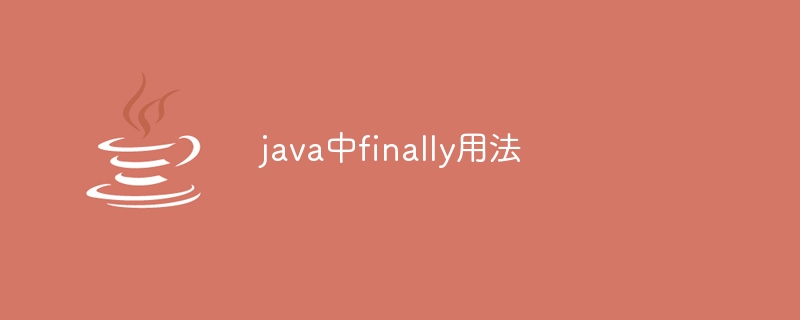
The finally block in Java is used to ensure that the code will be executed after the try-catch statement block is completed, regardless of whether an exception occurs. Common uses include releasing resources, performing cleanup operations, and recording errors. It executes after the try or catch block, has no access to local variables, and has execution priority higher than the return statement.

Usage of finally in Java
In Java, the finally block is an integral part of the exception handling mechanism . It ensures that some code is executed after the try-catch block completes, regardless of whether an exception occurs.
Purpose
The finally block is usually used in the following situations:
Syntax
The syntax of the finally block is as follows:
try {
// 要尝试执行的代码
} catch (Exception exception) {
// 处理异常
} finally {
// 无论是否出现异常,都执行的代码
}Execution order
finally Blocks are always executed after a try or catch block. If no exception occurs in the try block, the finally block will be executed immediately after the try block. If an exception occurs in the try block, the finally block will be executed immediately after the catch block.
Note
Example
The following example shows how to release a file connection:
BufferedReader reader = null;
try {
reader = new BufferedReader(new FileReader("file.txt"));
// 读取文件
} catch (IOException exception) {
// 处理异常
} finally {
if (reader != null) {
reader.close();
}
}The above is the detailed content of How to use finally in java. For more information, please follow other related articles on the PHP Chinese website!
 The difference between win10 sleep and hibernation
The difference between win10 sleep and hibernation
 How to unlock android permission restrictions
How to unlock android permission restrictions
 What does Metaverse Concept Stock mean?
What does Metaverse Concept Stock mean?
 How to open rar file
How to open rar file
 Introduction to screenshot shortcut keys in win8
Introduction to screenshot shortcut keys in win8
 Check folder size in linux
Check folder size in linux
 How to set the URL of tplink router
How to set the URL of tplink router
 linux view version information
linux view version information




